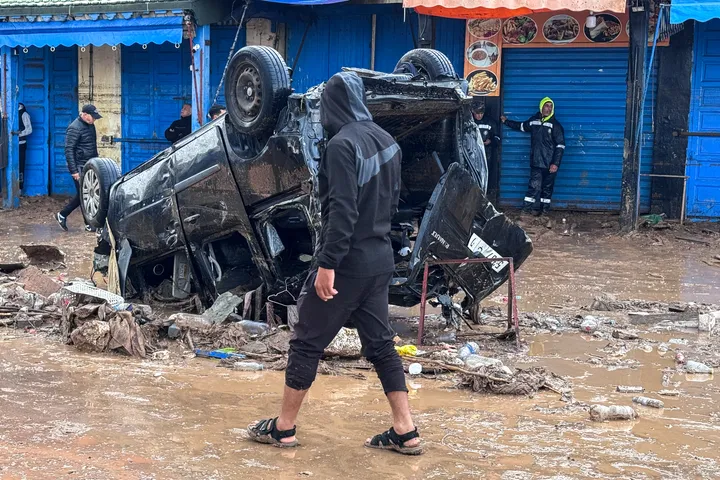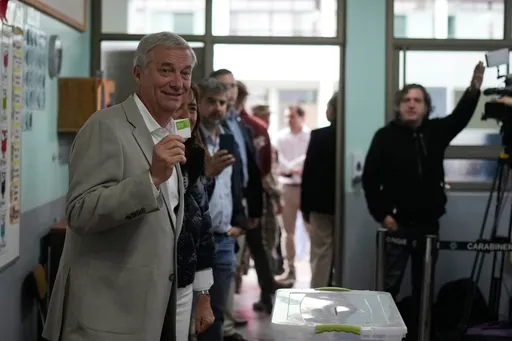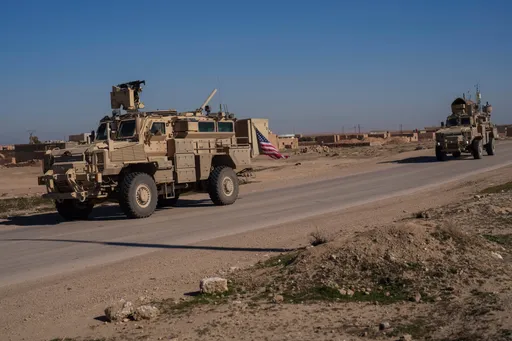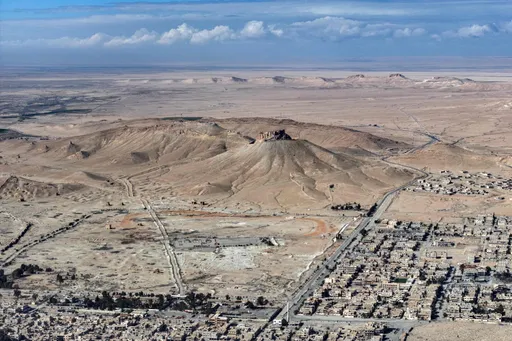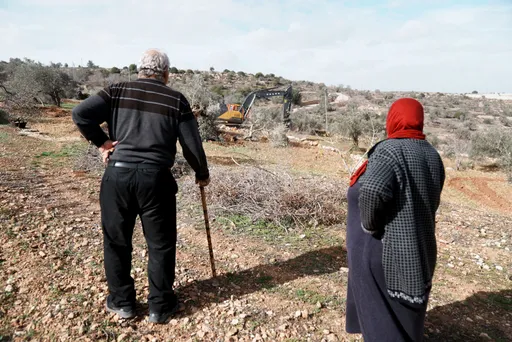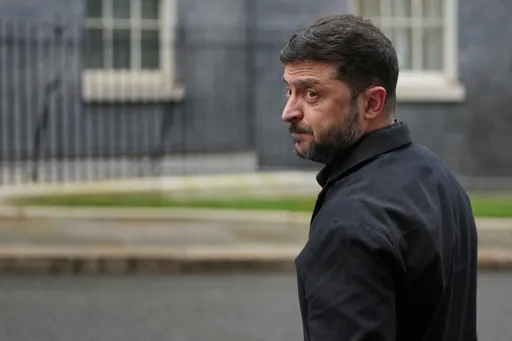Amid racial unrest across the nation, President Donald Trump on Monday declared himself “the president of law and order” and threatened to deploy the United States military to American cities to quell a rise of violent protests.
As Trump spoke, an incredible TV split screen developed around the White House. While he addressed the nation in the White House's idyllic Rose Garden, a series of military vehicles rolled out front on Pennsylvania Avenue and military police and law enforcement clashed with protesters at Lafayette Park.
Those peaceful demonstrators were cleared so Trump could walk across the park to St. John’s Episcopal Church, known as “The Church of the Presidents,” which suffered fire damage in a protest this week. Holding a Bible, he then stood with several of his Cabinet members as the cameras clicked.
“We have the greatest country in the world," Trump declared. “We're going to keep it safe."
Trump said he would mobilise “thousands and thousands" of soldiers to keep the peace if governors did not use the National Guard to shut down the protests. Loud tear gas explosions could be heard as authorities moved what appeared to be peaceful protests in the park.
The escalation came just after Attorney General William Barr came to the park to to survey the demonstrators.
According to senior defense officials, between 600 and 800 National Guard members from five states were being sent to Washington to provide assistance. Those troops were either already on the ground or will arrive by midnight.
Under the Civil War-era Posse Comitatus Act, federal troops are prohibited from performing domestic law enforcement actions such as making arrests, seizing property or searching people. In extreme cases , however, the president can invoke the Insurrection Act, also from the Civil War, which allows the use of active-duty or National Guard troops for law enforcement.
The officials said that some of the National Guard in DC will be armed and others will not. They said that the DC guard members do not have non-lethal weapons. The military police that are visible in the city are members of the Guard.
President Donald Trump on Monday derided many governors as “weak” and demand ed tougher crackdowns on burning and stealing among some demonstrations in the aftermath of violent protests in dozens of American cities.
Trump spoke to governors on a video teleconference that also included law enforcement and national security officials, telling the state leaders they “have to get much tougher."
“Most of you are weak,” Trump said. “You have to arrest people.”
The days of protests were triggered by the death of George Floyd, a black man who died when a white Minneapolis police officer pressed his knee into Floyd’s neck for several minutes even after he stopped moving and pleading for air.
The demonstrations turned violent in several cities, with people trashing stores, smashing and burning police cars and igniting fires in historic Lafayette Park across from the White House.
Accused by critics of doing too little to defuse the crisis, Trump was to address the nation early Monday evening.
The president urged the governors to deploy the National Guard, which he credited for helping calm the situation Sunday night in Minneapolis. He demanded that similarly tough measures be taken in cities that also experienced violence, including New York, Philadelphia and Los Angeles.
“You’ve got to arrest people, you have to track people, you have to put them in jail for 10 years and you’ll never see this stuff again,” said Trump. “We’re doing it in Washington, DC. We’re going to do something that people haven’t seen before."
The president told the governors they were making themselves “look like fools” for not calling up more of the National Guard as a show for force on city streets.
Attorney General Bill Barr, who was also on the call, told governors that a joint terrorist task force would be used to track agitators and urged local officials to “dominate” the streets and control, not react to crowds.
He urged the governors to “go after troublemakers.”
Trump's angry exhortations at the nation's governors came after a Sunday night of escalating violence, images of fires and looting and clashes with police filling the nation's airwaves and overshadowing the largely peaceful protests. The protests had grown so heated Friday night that the Secret Service rushed the president to an underground bunker previously used during terrorist attacks.
On Monday, Trump also spoke of trying to criminalize flag-burning.
The Supreme Court has conservative new members since it last ruled on that issue, and Trump said that “I think it's time to review that again.”
He continued his effort to project strength, using inflammatory tweets and delivering partisan attacks.
As cities have burned night after night and images of violence have dominated television coverage, Trump’s advisers have discussed the prospect of an Oval Office address in an attempt to ease tensions. The notion was quickly scrapped for lack of policy proposals and the president’s own seeming disinterest in delivering a message of unity.
Trump did not appear in public on Sunday and was not scheduled to on Monday either.
The demonstrations in Washington appeared to catch officers by surprise. They sparked one of the highest alerts at the White House complex since the Sept. 11 attacks in 2001.
Trump has told advisers he worries about his safety, while both privately and publicly praising the work of the Secret Service.
Demonstrators returned Sunday afternoon, facing off against police at Lafayette Park into the evening. Trump retweeted a message from a conservative commentator e ncouraging authorities to respond with greater force.
“This isn’t going to stop until the good guys are willing to use overwhelming force against the bad guys,” Buck Sexton wrote in a message amplified by the president.
In recent days security at the White House has been reinforced by the National Guard and additional personnel from the Secret Service and the US Park Police.
The Justice Department deployed members of the US Marshals Service and agents from the Drug Enforcement Administration to supplement National Guard troops outside the White House, according to a senior Justice Department official.
The official could not discuss the matter publicly and spoke on the condition of anonymity.




